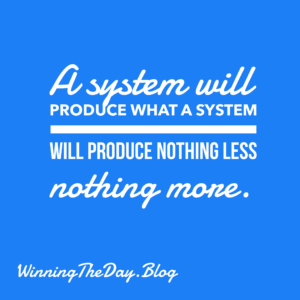Ever wonder how classic political philosophy can relate to the fast-paced world of real estate? Surprisingly, the ideas of thinkers like the authors of the Federalist Papers and John Stuart Mill offer valuable insights for real estate agents, recruiters, and broker owners today. Let’s explore how these seemingly ancient texts can inform modern real estate practice.
The Federalist Papers: Building a Strong Foundation (Like a Well-Planned Community)
The Federalist Papers, a series of essays advocating for the ratification of the U.S. Constitution, provide a blueprint for structuring successful real estate businesses:
- Federalism (National & Local): Just like the balance between national and state governments, real estate operates on both national and local levels. Agents need to be aware of broader economic trends and interest rates while deeply understanding hyperlocal market conditions, school districts, and neighborhood characteristics. Brokerages can also mirror this structure with regional or local branches, fostering specialized knowledge and responsiveness.
- Separation of Powers (Specialized Roles): A well-functioning brokerage, like a well-structured government, benefits from a clear division of labor. Agents focus on client relationships and sales, marketing teams handle promotion, and transaction coordinators manage the complex paperwork. This separation of powers ensures efficiency and accountability. Recruiters, take note: understanding these distinct roles is vital for finding the perfect fit for your team.
- Checks and Balances (Oversight & Compliance): In real estate, checks and balances are crucial for ethical and legal operations. This means thorough disclosures, independent appraisals, and meticulous legal reviews. Broker owners are responsible for implementing these checks and ensuring agents adhere to them, protecting both the brokerage and its clients.
- Republicanism (Client Representation): Real estate agents act as representatives for their clients, negotiating offers, navigating inspections, and advocating for their best interests. This representative function is the cornerstone of the agent-client relationship.
- Faction (Navigating HOAs): Madison’s concerns about factions are highly relevant to real estate. Homeowners’ Associations (HOAs) are essentially factions with specific interests and rules. Agents working in communities with HOAs need to understand how these groups function and how to effectively navigate their influence.
John Stuart Mill: Liberty, Representation, and the Pursuit of Homeownership
John Stuart Mill’s writings on liberty, representative government, and utilitarianism offer a different but equally valuable perspective for real estate professionals:
- On Liberty (Client Autonomy): Mill’s emphasis on individual liberty translates directly to respecting client autonomy. Agents should empower clients with information and guidance, but ultimately, the decision rests with the client. This principle also applies to the brokerage’s relationship with its agents, allowing them freedom in their business practices within ethical and legal boundaries.
- Harm Principle (Ethical Imperative): The harm principle is non-negotiable in real estate. Agents must avoid any actions that could harm their clients, whether through misrepresentation, negligence, or unethical behavior. Broker owners have a crucial role in establishing and enforcing ethical standards within their brokerage.
- Tyranny of the Majority (Fair Housing Practices): Mill’s warning against the tyranny of the majority is a powerful reminder of the importance of fair housing practices. Agents and brokers have a legal and ethical obligation to treat all clients equally, regardless of race, religion, gender, or other protected characteristics.
- Representative Government (Client Advocacy): As mentioned before, agents act as representatives for their clients. Mill’s work reinforces the importance of this role and the need for agents to be strong advocates, negotiating effectively and protecting their clients’ interests.
- Utilitarianism (Maximizing Client Satisfaction): While “happiness” is subjective, the principle of maximizing positive outcomes is central to real estate. Agents should strive to help clients achieve their real estate goals, whether it’s finding the perfect family home or securing a profitable investment. For brokers, this translates to creating a supportive environment for agents, leading to job satisfaction and ultimately, better client service.
Bridging the Gap: From Philosophy to Practice
These philosophical concepts might seem abstract, but they have concrete applications in the real estate world. By understanding and applying these principles, real estate professionals can:
- Agents: Build stronger client relationships based on trust, transparency, and ethical practices.
- Recruiters: Attract and retain top talent by emphasizing a supportive and ethical work environment.
- Broker Owners: Create thriving brokerages by fostering a culture of compliance, innovation, and client-centricity.
By embracing the wisdom of these classic thinkers, real estate professionals can elevate their practice, better serve their clients, and contribute to a more ethical and equitable housing market.




